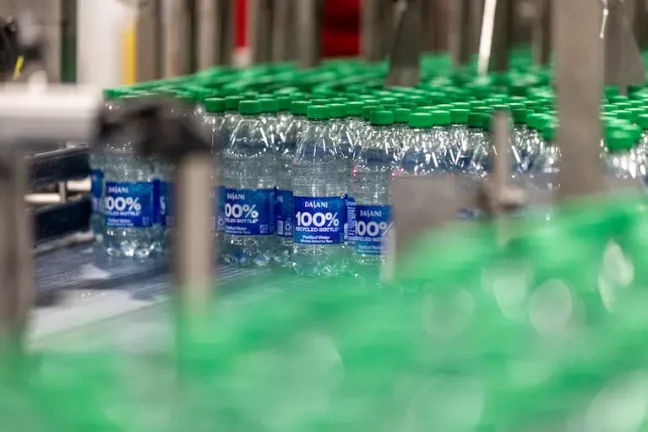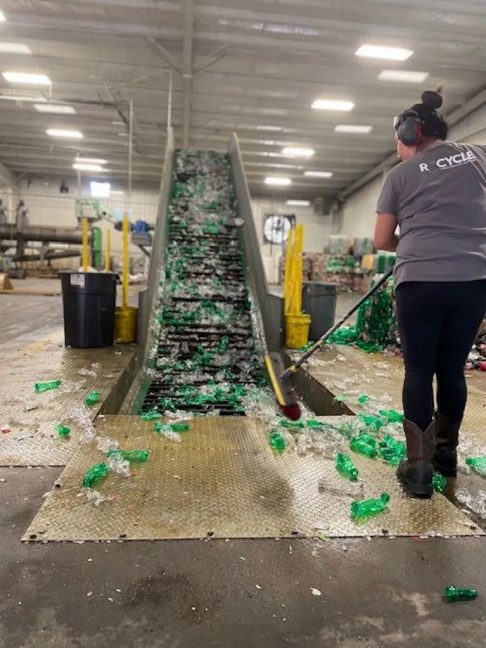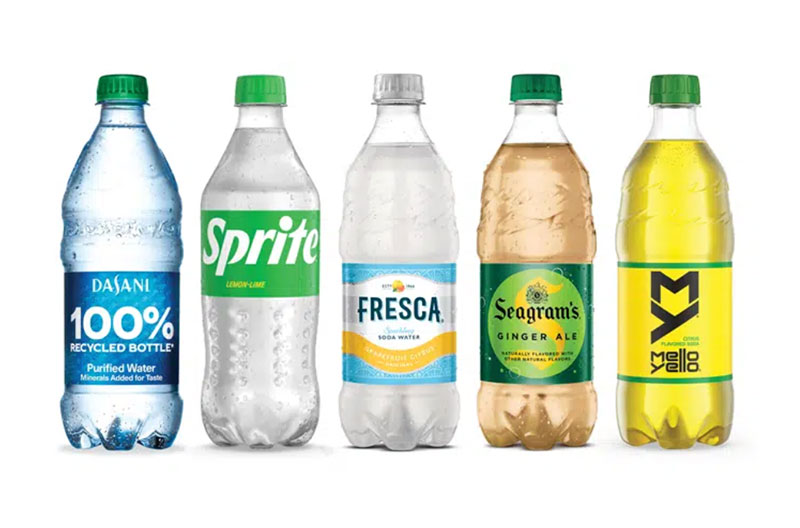Two of The Coca-Cola Company’s largest brands are taking steps to support a circular economy for plastic packaging. Dasani is launching bottles made from 100 percent recycled PET plastic, excluding caps and labels, while Sprite is transitioning from green to clear plastic to increase its likelihood of being remade into new beverage bottles.
A majority of Dasani bottles in the U.S. – from 20-ounce and 1.5-liter singles to 10-ounce and 12-ounce multipacks – will be offered in 100 percent recycled plastic this summer. In Canada, this transition will span all Dasani bottles.

The shift supports Dasani’s pledge to remove the equivalent of 2 billion virgin plastic bottles from production by 2027 compared to 2021 levels and the company’s World Without Waste goal to use at least 50 percent recycled material in its bottles and cans by 2030.
The brand’s transition is projected to save more than 20 million pounds of new plastic, compared to 2019, and cut more than 25,000 metric tons of greenhouse gas emissions in 2023. The announcement follows a launch of 100 percent recycled plastic bottles in New York, California and Texas, which also included Coca-Cola Trademark 20-ounce bottles.
“Demand for rPET exceeds supply, so the first step to scaling up use of 100 percent rPET across our portfolio is building a sustainable pipeline of high-quality material,” said Chris Vallette, SVP of technical innovation and stewardship. “We do this by working with communities to boost PET recycling and collection; collaborating with recycling partners; and, finally, securing rPET to help ensure the material for our bottles is used again and again.”
The initial launch helped drive consumer awareness through the on-pack “100 percent Recycled Bottle*” and “Recycle Me Again” calls to action also used on retail signage and other communications. Dasani bottles will continue to feature this messaging.
New bottle, same Sprite
Sprite, meanwhile, is shifting all of plastic PET packaging from its signature green color to clear, beginning Aug. 1. Although green PET is recyclable, the recycled material is more often converted into single-use items like clothing and carpeting that cannot be recycled into new PET bottles. During the sorting process, green and other colored PET is separated from clear material to avoid discoloring recycled food-grade packaging required to make new PET bottles.

“Taking colors out of bottles improves the quality of the recycled material,” said Julian Ochoa, CEO, R3CYCLE, which is working with Coca-Cola Consolidated to enable bottle-to-bottle recycling across the bottler’s 14 state-territory. “This transition will help increase availability of food-grade rPET. When recycled, clear PET Sprite bottles can be remade into bottles, helping drive a circular economy for plastic. Sprite’s move to clear will help us introduce more 100 percent rPET bottles like Dasani is launching and keep more bottles in the circular economy.”
In addition to transitioning to clear bottles, Sprite is introducing a new visual identity system featuring a revamped logo and packaging design to provide a consistent look and voice. Sprite’s packaging graphics will retain the brand’s recognizable green hue and include prominent “Recycle Me” messaging.
Coca-Cola North America’s entire green plastic portfolio – including packaging for Fresca, Seagram’s and Mello Yello – will transition to clear PET in the coming months.
For more information, visit coca-colacompany.com/sustainability.

